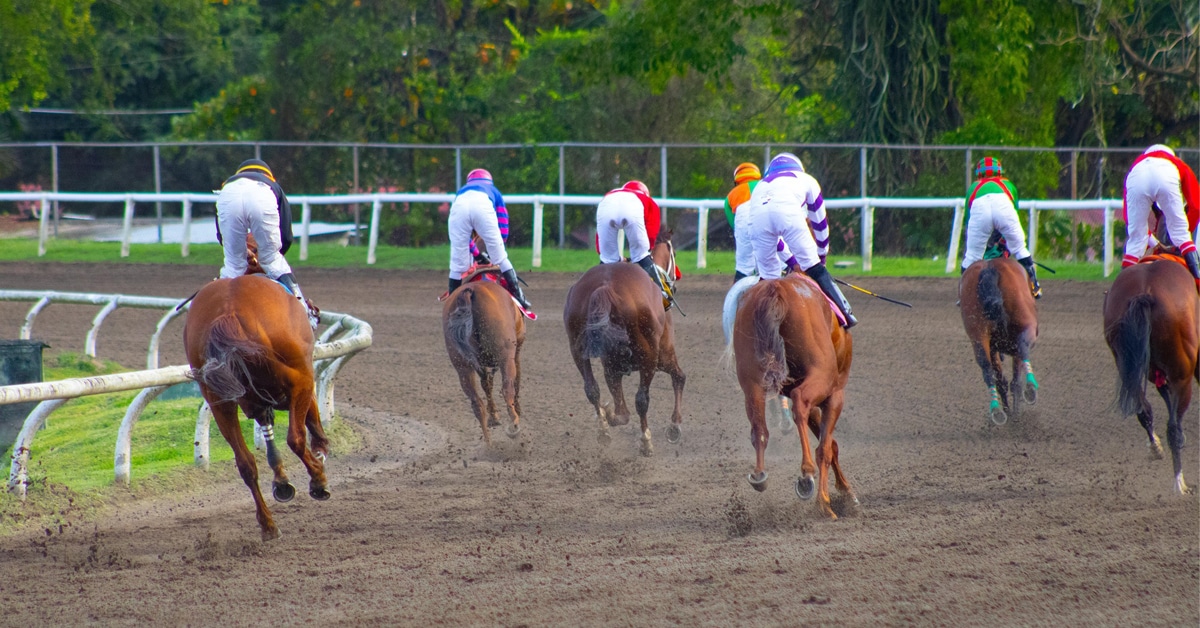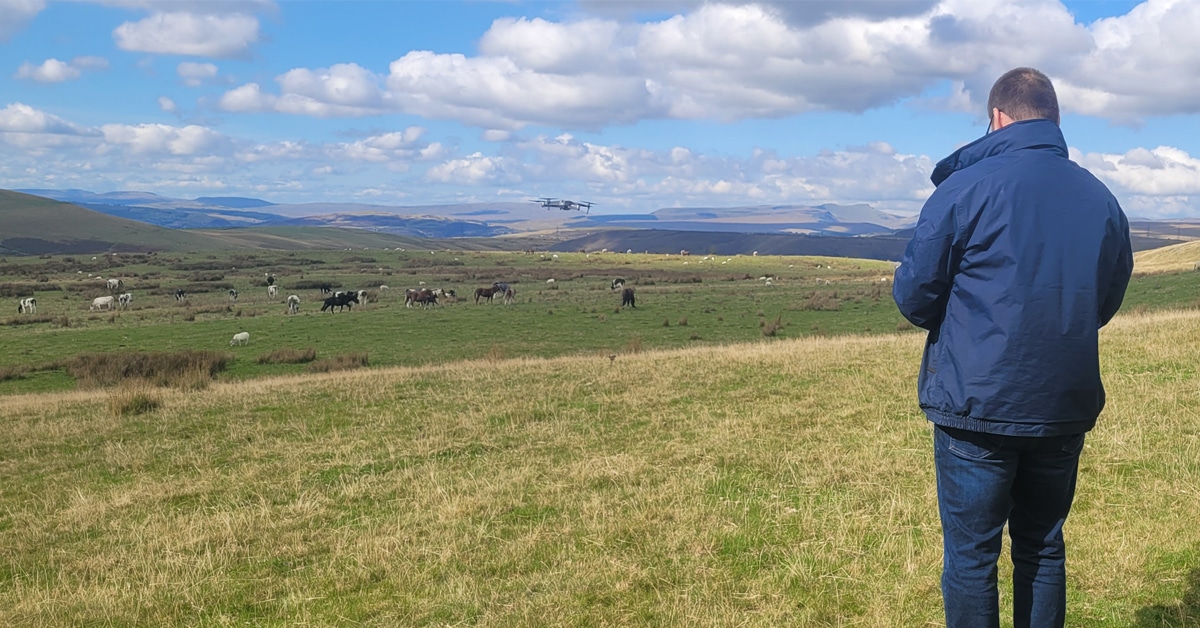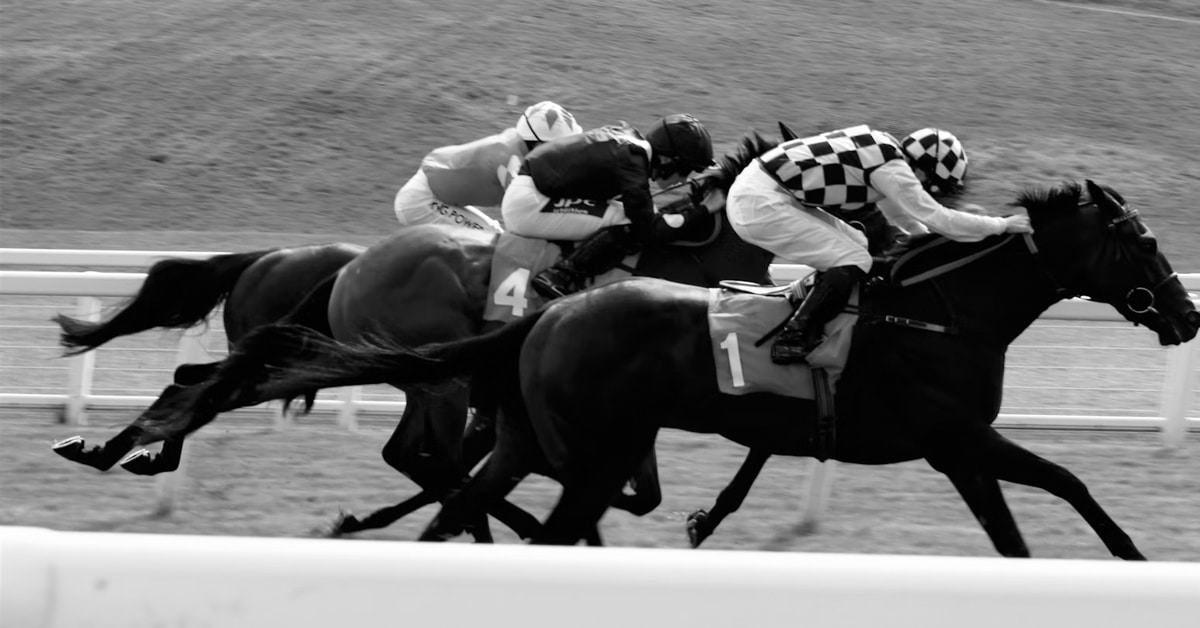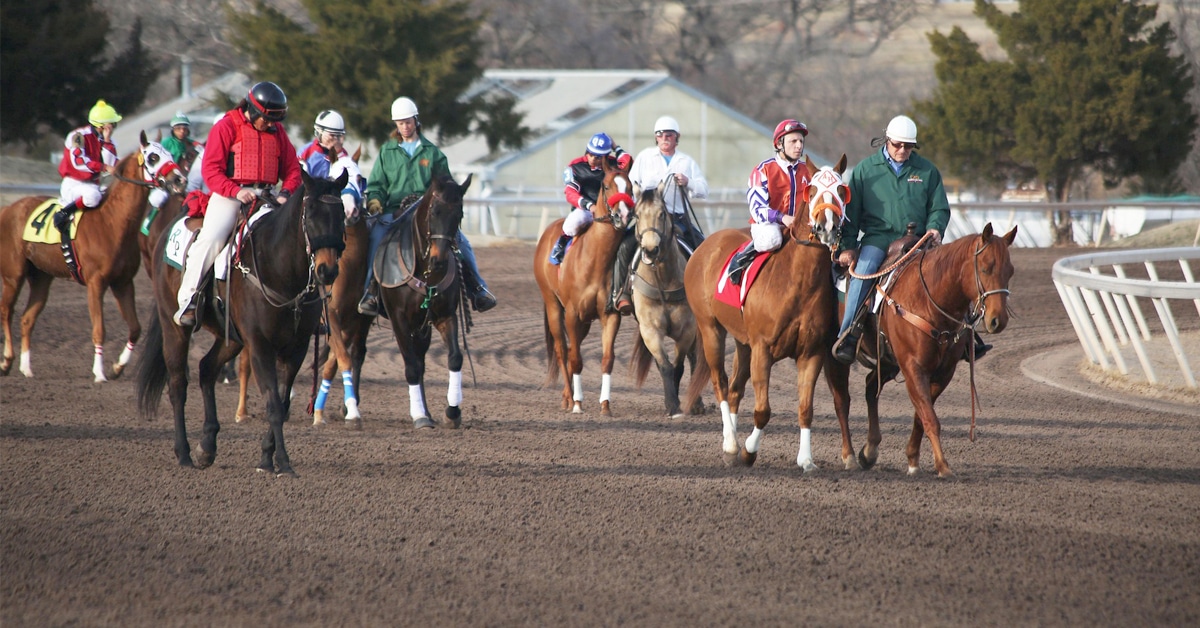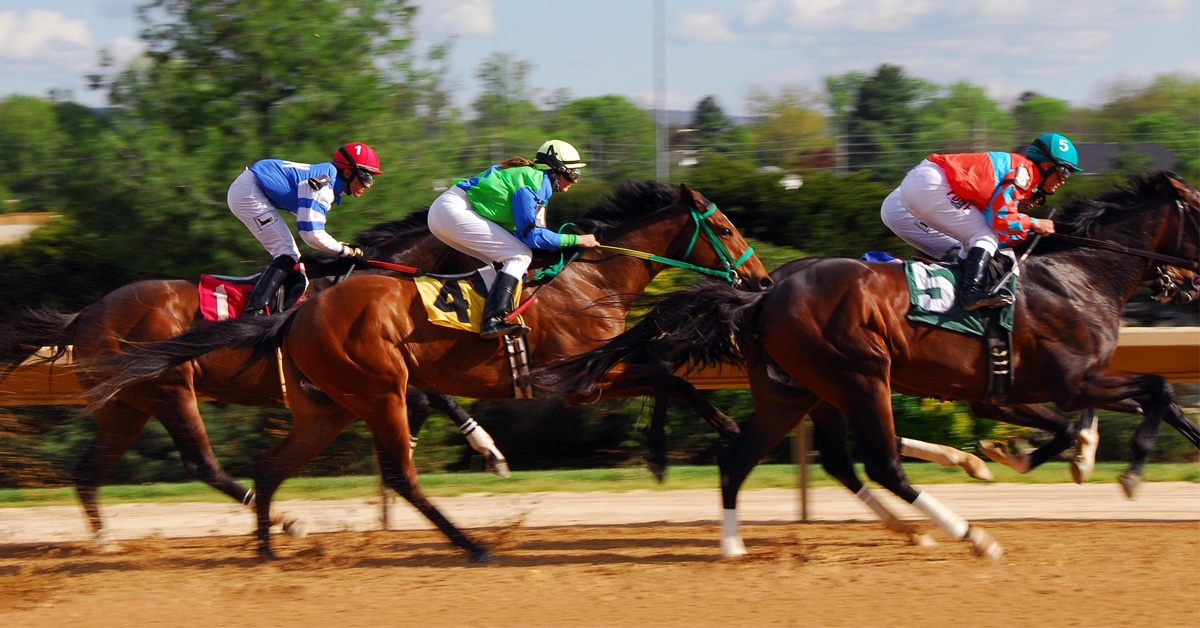How often have we heard about a horse, or horses, who “turned bad,” “went sour,” or turned out to be “counterfeit” (i.e. the horse’s true bad nature did not reveal itself until later)? Typical complaints include a deterioration in work performance or attitude without an obvious physical explanation: a show horse who refuses to leave the in-gate, a jumper who starts having more rails or refusals, a dressage horse who loses his brilliance, or any one of a litany of “naughty” behaviours including excessive spookiness, bucking, kicking, rearing, bolting, freezing, biting, head shaking, self-mutilation and so on.
Horses, unlike humans, simply do not to have the cognitive sophistication to become social deviants for personal gain, revenge or pure malice. While at the International Society for Equitation Science last year, I was struck by the number of equine scientists who felt that behavioural problems generally attributed to psychological pathology, or a horse’s bad nature, nearly always had a root physiological source.
WHY ARE WE MISSING THESE UNDERLYING PHYSIOLOGICAL SOURCES?
1. The source is hard to find
The common rule to uncovering the source of a behavioural issue is to rule out any physiological factors first. The difficulty is that this “ruling out” often involves a great deal more searching than the average one-hour vet visit is likely to entail. Since pain does not always show up in an obvious lameness, but often in these performance and behavioural indicators, a diagnosis is often elusive. Furthermore, the underlying cause may not reduce to one major physical problem, but instead have its etiology in multiple minor physical problems that each on its own would not account for the behaviour, but cumulatively could well do so (McDonnell, 2005).
At Dr. Sue McDonnell’s Equine Behaviour Lab at the New Bolton Center, University of Pennsylvania, any horse who comes in for a behavioural assessment is put under 24-hour video surveillance. McDonnell notes that many behaviours offering clues as to the source of these problems are observed only during the quiet night hours, and not when the distractions of a daytime clinic or stable divert the horse’s attention. Video footage can be played back in fast-forward where unusual behaviours may emerge (e.g. abnormal weight shifting), that are not obvious in real time.
McDonnell cites the case of a horse referred to their clinic because of deteriorating performance and severe outbursts of kicking, biting and self-biting over the past year. He had been punished and restrained for biting at his groin and given many different psychotropic medications in the belief that he was neurotic. When the horse was put under 24-hour video surveillance, the footage showed more subtle discomfort behaviours suggestive of groin pain. An ultrasound exam by a stallion reproduction specialist revealed damage to the testicular cord, which was intermittently twisting and causing the horse severe discomfort. Once the source of the problem was resolved the horse’s “behavioural problems” disappeared. McDonnell notes that this instant resolution of so-called behaviour problems once the physiological pathology has been remedied is typical. Again, horses, unlike humans, do not appear to hold a grudge.
Valerie Jonckheer-Sheehy, and colleagues (2012) describe the case of a five-year-old Dutch Warmblood mare referred to their clinic for rearing and flipping over onto her back immediately upon feeling rein tension. After each rearing incident, the mare remained trembling in the corner of her stall for several hours. Numerous examinations by an equine veterinarian and an equine dentist revealed no abnormalities, leaving the owner to conclude that the mare deliberately reared to annoy her. The owner had tried an assortment of different bits, positioning her on very short side reins to physically prevent the rearing and whipping the mare for the behaviour – none of which proved successful. At the author’s clinic an initial work-up revealed nothing, but the mare’s difficulties eating from a hay rack prompted a full radiograph exploration of the cervical region of her vertebral column. A fracture of the first and second cervical vertebrae was revealed. The experienced pain from pressure on the bridle headpiece and/or being asked to flex at the poll was undoubtedly the source of excruciating pain and the subsequent rearing.
2. The pain is hard to measure
Another difficulty in sourcing out physiological problems is that we cannot ask our horses where and how much it hurts. Recently, researchers have created pain scales to more accurately assess the degree and intensity of equine pain. One such scale, the Horse Grimace Scale (HGS), developed by Emanuela Dalla Costa and her colleagues, offers a promising method of objectively measuring equine pain from facial expression alone (2014). These researchers looked at horses’ facial expressions pre- and post-castration and rated horses on six facial expressions (e.g. positioning of the ears, muscle tension around eyes, mouth, facial muscles and nostrils). Based only on photographs of horses’ heads, blind coders were able to reliably categorize post-surgery horses from controls that had not undergone surgery. The HGS has also been tested and validated in other pain situations, including horses suffering from laminitis and acute and chronic orthopaedic pain. Now developed as a Smartphone app (only Android devices so far), the HGS may well serve as an education tool for determining more subtle expressions of our horses’ physical suffering.
3. Stoicism makes it murkier
A number of years ago, in the midst of a lengthy diagnostic work-up with my own horse, I said to the vet, “If only we could ask them!” to which she responded, “Believe me, you do not want to know. You would never ride again!” She was referring to what some researchers have termed “stoicism” – horses’ remarkable ability to continue to work willingly in spite of experiencing extraordinary physical discomfort.
Even lameness, the typical behavioural indicator to gauge pain severity, may not be the best predictor of actual tissue damage and the extent of a horse’s suffering. Equine scientist Carrie Ijichi and her colleagues rated 21 horses with existing lameness for the extent of tissue damage (assessed by equine practitioners with radiographs and ultrasound) and the degree of lameness exhibited. Surprisingly, they found no relationship between these two variables. Rather than tissue damage, it was the horse’s personality (assessed by owners on personality scales adapted from research on humans) that was related to the lameness rating. Horses that were more extroverted were also more likely to demonstrate lameness, suggesting that their introverted counterparts may often go undiagnosed. Since lameness is routinely used to assess the progress of a condition, potential treatment, evaluation of interventions, and to inform decisions about euthanasia, Ijichi’s findings (and lack of findings!) are noteworthy.
Ijichi also calculated a stoicism score (severity of damage score minus clinical lameness score) and found that stoicism was also related to horses’ personalities. Horses rated as higher on the neuroticism scale (excitable, reactive, and sensitive) were also less stoic, and rated by their owners as less pain tolerant, indicating that these horses may have a reduced pain (or stress) threshold. This finding is also consistent with research on humans where neuroticism is positively correlated with pain sensitivity.
4. The source looks like something else
Often behaviour problems are ascribed a psychological cause because they are triggered by an environmental or social event – only when the owner is present, only when being tacked up, only when there is another horse around and so on. These problems, however, often have a physical source, but particular social or environmental events elicit or predict the expression of that discomfort. Alternatively, environmental events can distract the horse from discomfort and so again be misinterpreted as a behavioural or psychological problem (McDonnell, 2005).
A lame horse leaving the barn that is sound upon returning is often described as “faking” his lameness. McDonnell notes, however, that when the physiological source of the lameness has been uncovered and remedied, this “faking” behaviour ceases, thus belying the notion that horses harbour complex plans about how to shirk their responsibilities. A more plausible explanation may be that the adrenaline boost associated with the anticipation of returning to the stable and ending the pain momentarily overrides the protective function of favouring the injury.
5. The obvious is not so obvious: the role of ulcers
Current intensive management systems (living in stalls with limited turn out and grazing opportunities, reduced roughage, prescribed feedings of rich and rapidly consumed concentrates, and hay that is high in quality and short in quantity) leave horses vulnerable to equine gastric ulcer syndrome (EGUS), the result of an imbalance between the protective and acid-producing functions of the stomach. Horses, with a gut designed for almost continual grazing, produce gastric juices constantly (up to nine gallons of acidic fluid per day). When there is no buffering food or saliva in the stomach, the protective stomach tissue is eroded (Neito et al., 2004). Other risk factors for EGUS (transport stress, solitary confinement, and anti-inflamatory medications or NSAIDS) make it little wonder that EGUS has been called a human created disease. The prevalence of EGUS varies according to discipline with racehorses topping the charts at about 90 per cent prevalence rates, followed by show horses at 60 per cent to 80 per cent. Even healthy, clinically normal, pleasure horses have surprisingly high reported ulcer rates of 53 per cent, however (Lutherrson et al. 2009).
Dr. Nick Kleider, a veterinarian based in Langley, B.C., notes that ulcers create a huge array of behavioural problems, interpreted as resistance or bad behaviour, that are often immediately resolved with ulcer treatment. “As soon as someone says they have a behavioural problem, now I just twig to ulcers,” said Dr. Kleider. He cites a case of a jumper who competed successfully in the Young Rider division in California this past season. Once home, the horse started refusing to jump and bucking as soon as the rider applied leg. Suspecting a lameness issue, the owner enlisted Dr. Kleider for an extensive lameness exam. When the work-up revealed no abnormalities, Dr. Kleider said “I don’t have an answer for you. Let’s try him on ulcer meds.” After three days, the horse was completely back to normal. Dr. Kleider notes that the California trip could well have created the perfect storm for the development of ulcers – an intense show schedule, limited turn out, no grazing, solitary confinement and a long stressful haul to and from California. Recent studies have demonstrated that even a few hours of transport can induce gastric ulceration in horses that had none prior to departure (Nieto, 2012).
Rather than sending a horse for an expensive endoscopy, which involves a 24-hour fast and an overnight hospital stay, further contributing to the horse’s stress, Dr. Kleider puts horses on pharmacy grade ulcer medication (omeprazole) as a first line of treatment. It is effective within 72 hours, inexpensive and functions well as a simple diagnostic tool.
Even if medication resolves the situation, Dr. Kleider stresses that medication alone is not the solution. This treatment must go hand-in-hand with a change in management practices, including increased turn out (with a buddy where possible), more opportunities for grazing and the provision of higher roughage free choice hay. As some horses do not respond to ulcer medication, Dr. Kleider may then recommend an endoscopy to absolutely rule out EGUS as a source. To date, this second step has not been necessary.
Dr. Kleider has also found success in treating cribbers with ulcer medication. One of his clients was horrified to discover that the horse he had just acquired was a cribber. Dr. Kleider suggested putting the horse on omeprazole, and the cribbing disappeared almost immediately. Although results are not always as dramatic, Dr. Kleider is sufficiently convinced of the connection between cribbing and ulcers that he routinely recommends omeprazole as a first line of treatment.
Cribbing is thought to relieve ulcers by momentarily extending the stomach and releasing pressure. Also, the increased salivary flow from cribbing may attenuate the acidity of stomach excretions and bring a modicum of relief. Indeed, the link between cribbing and colic may well be due to the third variable of ulcers. Rather than cribbing causing colic it may be that both cribbing and colic are related to the presence of ulcers, which, when treated, often reduces the occurrence of both.
WHY THE DEFAULT ATTRIBUTION TO A HORSE’S BAD NATURE?
Anthropocentric Bias
Why are we so quick to unjustly malign our horses and attribute their behaviour problems to their deviant nature? We are human and, as such, we view the world through a human-centred, or “anthropocentric” lens. When horses behave badly they really do look crazy, neurotic, or just bad. As McDonnell notes, “a horse in the midst of an explosive episode … exhibits bizarre animal behaviour reminiscent of severe neurotic repetitive behaviour or the psychotic rage of humans.”
This inevitable anthropocentric bias sets the stage for anthropomorphism – the ascribing of human characteristics, thoughts, feelings and motivations to inanimate objects, events, or animals. At first thought, anthropomorphism would surely proffer an advantage in our attempt to understand our horse’s behavioural issues. Presumably, if we believe that our horses share our cognitive capacities, feelings and intentions, we will be more likely to search out underlying causes for behaviours that seem out of character. Yet, horses are habitually accused of being lazy, stubborn, arrogant and malevolent when their behaviour does not please us. Underlying these accusations is the assumption that the horse knows what we want, that he also desires it, and when he fails to provide it, that he is deserving of punishment. As outlined here, horses under-perform for any number of reasons, and most often because they are in pain. Anthropomorphism muddies the water and makes us have expectations of horses as moral beings. Ultimately, it impairs our ability to understand them, makes us less likely to look deeper, and creates more potential for abuse.
The Fundamental Attribution Error
Insights in social psychology may shed some further light on why we are so quick to believe that horses have “turned bad” when they display unwanted behaviours. Lee Ross from Stanford University in his study of attributions (how we explain and understand why others act as they do), studied and coined the term Fundamental Attribution Error – FAE, (1977): When making attributions about the behaviour of others, particularly their bad behaviour, we overestimate the influence of others’ stable and enduring traits (dispositional attributions) and underestimate the influence of external factors (situational attributions). For our own behaviour, we are much more likely to take situational variables into consideration, particularly when our own behaviour has not been admirable. Think about your instant attributions when someone cuts you off in traffic (What a bleeping idiot! – dispositional), and when you have done the same thing to someone else (Wow! This car has a huge blind spot. That guy came out of nowhere! – situational).
Ross proposed that the FAE occurs because it requires less mental effort. As observers, it is simply easier to make a dispositional attribution when the context is not obvious. As actors, other contextual variables are known and easily accessed. The FAE becomes yet another convenient, mental shortcut (what psychologists call “heuristics”) that help us filter through the mega mental processing that we need to do every minute of every day.
Given our anthropomorphic tendencies with our horses, it is possible that we fall victim to the FAE when trying to understand their bad behaviours. Situational variables are sufficiently difficult to determine when the “other” is a human being. They are considerably more difficult when we are dealing with another species, who has a vastly different world perspective, and with whom we share no common language.
SORTING OUT THE PUZZLE
It is worth remembering that “naughty behaviours” are nearly always normal behaviours. Fleeing when threatened, rearing when faced with conflicting and inescapable aids, bucking, spinning, or bolting to escape pain are adaptive and normal responses for a prey animal that is designed with acute senses and a hair trigger flight response. These powerful instincts will often trump training since their lives may well be dependent upon them in non-domestic circumstances. The idea that a horse has “turned bad” is rarely the correct answer; at the very least, it should be our last answer. When the cause of a new and undesirable behaviour is not obvious, we may simply need to look harder.
Equine scientists such as MacDonnell believe that we could do well to foster greater integration among coaches, stable managers, veterinarians, and equine behaviour specialists in differentiating between physical and psychological causes of behavioural issues. Getting clues to the source of physical discomfort, information that may come from some or all of these professionals, plays a huge role in sorting out this puzzle.
The Latest

